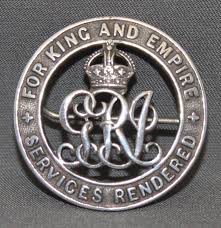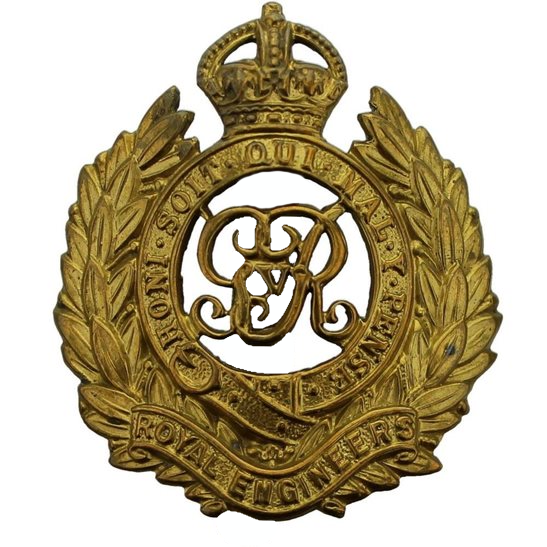Personal Details
Born: 25 February 1896 and baptised 20 May 1896 in Whitchurch, Shropshire.
Family: He was the seventh of eight children born to Thomas Challinor, a house painter, and his wife Mary Challinor.
Residence: In 1901 the family were living at 7 Claypit Terrace, Whitchurch, Shropshire; ten years later they had moved to 29 Claypit Street, Whitchurch.
Employment: In the 1911 Census he was a 14 year old newspaper boy.
Died: June 1956 in Whitchurch, Shropshire.
Military Details
Regiment: Royal Engineers
Rank: Pioneer
Service Number: 269421
Date of Enlistment: 30 April 1914
Date of Discharge: 16 April 1918
Reason for Discharge: Sickness
Other Information: Enlistment date wrong in official records. May have receive 1914/15 Star.
Harold was awarded the Campaign Medals (British War Medal and Victory Medal) and the Silver War Badge.

The British War Medal (also known as 'Squeak') was a silver or bronze medal awarded to officers and men of the British and Imperial Forces who either entered a theatre of war or entered service overseas between 5th August 1914 and 11th November 1918 inclusive. This was later extended to services in Russia, Siberia and some other areas in 1919 and 1920. Approximately 6.5 million British War Medals were issued. Approximately 6.4 million of these were the silver versions of this medal. Around 110,000 of a bronze version were issued mainly to Chinese, Maltese and Indian Labour Corps. The front (obv or obverse) of the medal depicts the head of George V. The recipient's service number, rank, name and unit was impressed on the rim.
The Allied Victory Medal (also known as 'Wilfred') was issued by each of the allies. It was decided that each of the allies should each issue their own bronze victory medal with a similar design, similar equivalent wording and identical ribbon. The British medal was designed by W. McMillan. The front depicts a winged classical figure representing victory. Approximately 5.7 million victory medals were issued. Interestingly, eligibility for this medal was more restrictive and not everyone who received the British War Medal ('Squeak') also received the Victory Medal ('Wilfred'). However, in general, all recipients of 'Wilfred' also received 'Squeak' and all recipients of The 1914 Star or The 1914/1915 Star (also known as 'Pip') also received both 'Squeak' and 'Wilfred'. The recipient's service number, rank, name and unit was impressed on the rim.

The Silver War Badge was issued in the United Kingdom and the British Empire to service personnel who had been honourably discharged due to wounds or sickness from military service in World War I. The badge, sometimes known as the "Discharge Badge", the "Wound Badge" or "Services Rendered Badge", was first issued in September 1916, along with an official certificate of entitlement.

